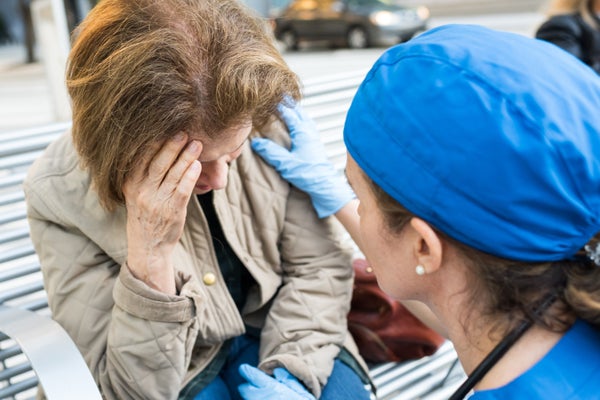Women make up a mere quarter of emergency doctors in the U.S., according to data from the American Medical Association. This statistic does not signal well to gender equality in medicine or young women considering the specialty—and it may have even darker implications for patients. A new study suggests female heart attack patients may be at a higher risk of mortality in the emergency room if they see a male physician rather than a female one, giving greater urgency to diversity initiatives in medicine.
Heart disease is the number-one killer of both men and women, but the latter are significantly less likely to survive heart attacks. According to 2016 American Heart Association statement, 26 percent of women will die within a year of a heart attack compared with just 19 percent of men. The gap widens with time: By five years after a heart attack almost half of women die, compared with 36 percent of men.
The reason has eluded researchers for years, but the authors of the new study point to the disparity in male and female representation in emergency doctors as a potential source of answers. The researchers analyzed a Florida Agency for Health Care Administration database containing every heart attack case from every ER in the state (excluding Veterans Affairs hospitals) between 1991 and 2010.
On supporting science journalism
If you're enjoying this article, consider supporting our award-winning journalism by subscribing. By purchasing a subscription you are helping to ensure the future of impactful stories about the discoveries and ideas shaping our world today.
The researchers divided 500,000-plus cases into four categories: male doctors treating men; male doctors treating women; female doctors treating men; and female doctors treating women. “All of those are statistically indistinguishable except for male doctor–female patient,” says Brad Greenwood, an author on the study and a data scientist at the University of Minnesota. If a heart attack patient is a woman and her emergency physician is a man, he says, her risk of death suddenly rises by about 12 percent.
Put another way, a heart attack patient dies in the ER about 11.9 percent of the time overall—but the research team found women with heart attacks will die about 12.4 percent of the time if their cases are handled by male doctors. This means approximately one out of every 66 women with heart attacks dies in the emergency room if she sees a male doctor rather than a female one. “Even though lives should be equally saved, we are seeing this pervasive difference,” says study co-author Laura Huang, a professor of business administration at Harvard Business School. “Something about the female experience when she’s being treated by a male doctor” is linked to these deaths, she says.
Emergency doctors and cardiologists, however, are wary of jumping to conclusions just yet. It is a little early to say male physicians have trouble treating female heart attack patients based on these data alone, says Michelle O’Donoghue, a cardiologist at Brigham and Women’s Hospital and Harvard Medical School who did not work on the new study. “Spurious signals sometimes come up [in research], so this should be replicated,” she says. Still, she adds, the study raises many troubling questions about the treatment of women in the ER, “like the concern there’s a systematic bias where male physicians are not listening to female patients’ complaints as readily as [those of] a man.” Or there could be a bias that favors men in the medical literature (in which heart attacks are better understood when they happen in men), leading to misdiagnoses in women. “There have definitely been several studies that have shown that women are slower to be diagnosed, and that might be explained by the fact that women are more likely to have ‘atypical’ symptoms,” O’Donoghue notes.
Female doctors may also simply be performing at least some parts of the job better than their male counterparts do. In the new study everyone was more likely to survive if they saw a female physician, and a study published last year in JAMA Internal Medicine indicated all patients of female physicians had lower mortality and hospital readmission rates. “It seems that the female doctors practice in a better way or outperform male doctors,” says the JAMA study’s first author, Yusuke Tsugawa, an assistant professor of medicine at the David Geffen School of Medicine at University of California, Los Angeles. Female doctors are more likely to speak with their patients longer and provide more evidence-based care than their male colleagues, Tsugawa says. This could help them to pick up on heart attacks, even if women have more atypical symptoms.
Such a scenario might also explain another of Greenwood’s findings: The more female colleagues a male emergency physician had, the more likely his female patients were to survive as well. “It could be you have spillover between physicians,” he says. “A male physician sees a female physician treat a female patient successfully, and sees potential cues. Or you have assistance: A female colleague cues him into what’s going on.”
Whereas much more work is needed to understand the gender gap in heart attack survival, the new findings do imply having more female representation in hospitals may save lives, says Michelle Lall, an emergency physician at Emory University School of Medicine and president of the Academy for Women in Academic Emergency Medicine, who did not work on the study. “I would hope that in reading this leaders in emergency medicine—whether directors or department chairs—would consider that we are an asset beyond being a diverse workforce.”
